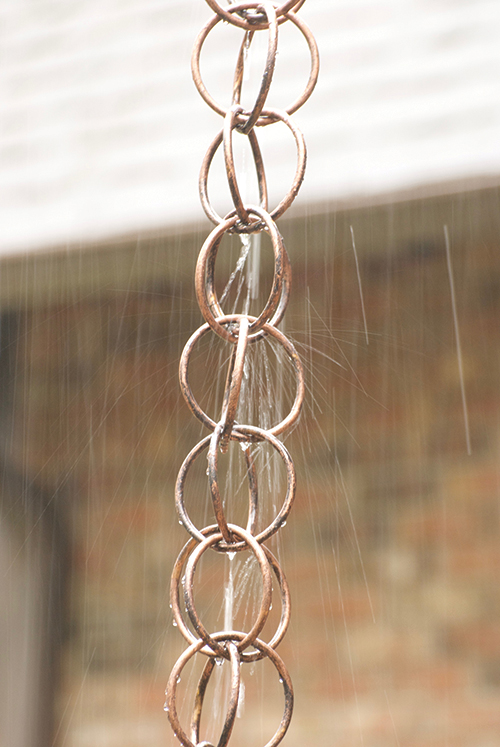
My second lesson was in the physics realm. Most rain barrels rely on gravitational flow to empty, which means they either need a motorized pump or must be raised (usually 2 to 3 feet above ground level) to provide sufficient water pressure to irrigate some of my plants. I used cinderblocks to raise my barrels, though if you want a more attractive option, you can buy or build specifically designed rain barrel stands. I also attached soaker hoses, the kinds with small holes along their length that allow water to slowly seep out, to my barrels and use these to drip-irrigate around the bases of my shrubs.
Another problem I’ve had is mosquitoes, which like to breed in my water barrels. I control these pests by draining the barrels frequently and putting either slow-dissolving mosquito “dunk” tablets, a tablespoon of liquid dish soap or a quarter-cup of vegetable oil to the barrels each week or after each rain event. These treatments won’t hurt plants when the water is used for irrigation.
Because I also want to harvest the beauty of rainfall, I have installed a couple of rain chains, too. Rain chains have been used for hundreds of years in Japan (and in other parts of the world) as decorative downspouts to channel rainwater away from the foundation of buildings or into rain barrels, decorative bowls or even birdbaths and garden ponds.
Rain chains are usually attached to gutters in lieu of downspouts and are typically made from decorative metal rings or small pots linked together, but they can also be created using all sorts of repurposed items, such as watering cans and even silverware. While you can purchase rain chains from a variety of retail outlets, they can also be fun do-it-yourself projects. My 5-year-old grandson and I recently made one by linking together colorful zip ties — which was more festive than elegant, but was a perfect project for a summer day.
Much more information on rain barrels, rain chains and other water-saving options is available online and through local Cooperative Extension offices, retail garden centers, public gardens and water agencies, many of which host rain harvesting workshops that can help you — and your plants — better harness and enjoy the rain.
July Tips
[list]
-
Plant heat-tolerant annual and perennial flowers.
-
Plant late-season summer vegetables.
-
Begin starting seed for early fall vegetables and start selecting seed for later-season vegetables.
-
Divide over-crowded perennials and irises.
-
Remove (deadhead) faded flowers from annuals, perennials and summer-blooming lilies.
-
Remove fallen fruit from under fruit trees and bushes to avoid attracting pests or promoting disease.
-
Refresh mulch around shrubs, trees and in garden beds to help retain moisture in the soil, keep roots cooler and suppress weeds.
-
Watch out for insect and disease problems in the lawn, landscape, garden beds and on potted plants and treat as needed when they occur.
-
Safely store lawn equipment and chemicals that may be harmful to children and pets.
-
Guard against sunburn and insect bites by using sunscreen and insect repellent and wearing protective clothing, hats and gloves.
[/list]

Katie Jackson is a freelance writer and editor based in Opelika, Alabama. Contact her at [email protected].




